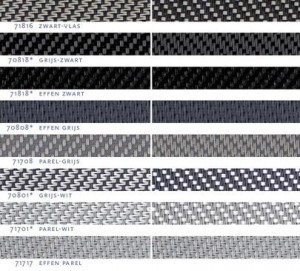Over het midden zoeken: een herwaardering voor de grijstinten in onderwijsdebat
15 november 2013
Grijstinten. Nee, niet zoals in 'Fifty shades of grey'. Maar over 'het midden vinden' tussen zwart en wit denken. Amber Walraven mist in onderwijsdiscussies vaak de nuance: de waarheid is immers vaak complexer dan we in een statement kunnen vatten. Haar visie op een aantal polariserende debatten en wat het 'grijs' daartussen is. 'It's good to be grey!'
'It's good to be grey!' I’m getting really frustrated of all the debates in education being corrupted with black and white thinking. We won’t get anywhere if we don’t stop, think and most of all listen.
Example 1: tablets (or ICT in general) in schools.
Black: ICT makes pupils numb, dumb and square eyed. They will never play again and won’t know how clay feels…
White: Clay? Clay? Yes, clay! Our schoolsystem makes use of claytablets! Nothing has changed in the past year! It’s a museum!
Grey: ICT is important, it’s there, we work with it. We need to teach children how they can make use of ICT, and we need to know how ICT can help them learn. A lot of schools are already experimenting with ICT. Let them share their experiences, so we can all learn. We need to know more about what works and when. Poorly designed pilots will only result in more black and white. We need valid pilots, resulting in knowledge on when, how, what and a parade of learning material. Perhaps some things simply can’t be replaced by ICT, and surely ICT won’t be used all the time. And, most important, ICT should be a means, not a goal. This takes time and everyone needs help. It is important to work on all levels, macro, meso and micro, let’s find out together!
Example 2: testing (especially in Kindergarten).
Black: Testing is a sin! It’s child abuse! You can’t test a child, for there is no good way to test a child! Why don’t you trust the teachers?
White: Testing should be done as much as possible. There is only one valid test, and that is the written, norm or age-based one. You can also measure teacher or school quality with this test.
Grey: It’s important to follow a childs development. This can be done in several ways. Norm or age-based testing is one of them. Criterion-based testing another. Observations by teachers yet another. If we make use (in an organized, well deliberated way) of a collection of tests, where not all test measure the same, but all test together provide a clear picture of a child’s development on various aspects, then we can actually get to personalized education. Giving a child what is necessary at that moment. How do I observe a child, and how do I know which behavior shows which level of development, some teachers may ask. Others may wonder how to go about criterion-based testing. This takes time and everyone needs help. It is important to work on all levels, macro, meso and micro, let’s find out together!
Lees verder.
Amber Walraven (1980) houdt zich bezig met ICT in het onderwijs en excellente en hoogbegaafde leerlingen.


Reacties